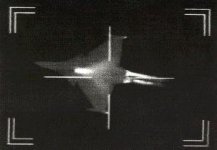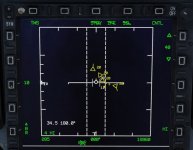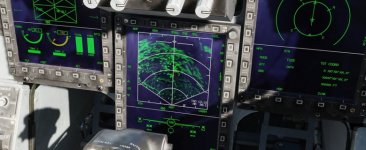That all depends on the assumption on the range of the AESA on the JF-17.
We don’t know its exact range even though there is plenty of estimates. After all, if that system is providing range for the PL-15 then perhaps it is capable of providing at range shots for whatever weapon this is.
Although considering the number of projects(Faaz and this) means it’s likely not even meant for the JF-17 but whatever PFX will be and Kaan
We need not wait till the PFX or the KAAN, much can be done on JF-17 Block 3 or JF-17s upgraded to the Block 3 standard.
Let’s assume for a 5m^2 target it’s 170 km as per the following tweet with the official manufacturer’s poster. Per the video in my past post, the Turkish ramjet missile has a range of greater than 200 km. If we figure that modern IRST systems like the pirate have a range (in good weather) out to over 100 km and the no-escape zone of the meteor (a similar classed missile; ducted ramjet bvr missile) depending on flight conditions somewhere out to a similar 100 km, with the dual mode seeker, it should still should be able to be employed by the JF-17.
Against threats like the Rafale (with an RCS of lets say 0.3-0.5 m^2, depending on the angle) the KLJ-7A be able to detect it at
only 40-50 km (per the radar RCS formula). This is where the IRST and IR seeker are really important, and be able to launch at the max no-escape limit of 100 km or anywhere below that depending on flight conditions.
Rafale’s IR signature is small, but still noticeable, and with advancements in Chinese and Turkish IRST tech, a modern pod of detecting even the Rafale at 100 km (the approx. max NEZ of the new ramjet missile) should be possible.
Sensor fusion of the radar and IRST data, should allow a more likely weapons track, that could be acted upon.
For example, about the Eurofighter’s Pirate IRST, from more than a decade ago, per its Wikipedia article.
“The range of the sensor is a closely guarded secret by the EuroFirst consortium but confirmed to be more than 74 km. The RAND Corporation reports ranges of 50 nm (93 km) to a subsonic target from the front and up to 90 nm (167 km) from the rear of a subsonic target. However, the weather conditions will affect the performance of the infrared-based target search and target tracking significantly. In
2013, the detection range of PIRATE was said to be further increased by software updates.”
The Indians don’t expect their AMCA to be ready in the next 15 years, so, they will rely on the Rafale as their frontline fighter.
Therefore, creating this capability (KLJ-7A, IRST, new AESA seeker Ramjet missile with IR secondary seeker), now, on the JF-17 Block 3 should help the JF-17 be able to have a reasonable chance against even the most advanced IAF planes. Considering a third to half the PAF fleet is JF-17 fighters, having this on our most numerous fighter should be a priority, IMHO. All it takes is a modern IRST pod on the new KLJ-7A equipped JF-17s and making the most out of this new Turkish ramjet missile, by addition of an IR secondary seeker.
We should also remember that with Turkey knowing it could go up against Greek Rafales, its latest Bilgem EW EHPOD could be a good option for the JF-17, and help even the EW picture vis a vi the Rafales.












